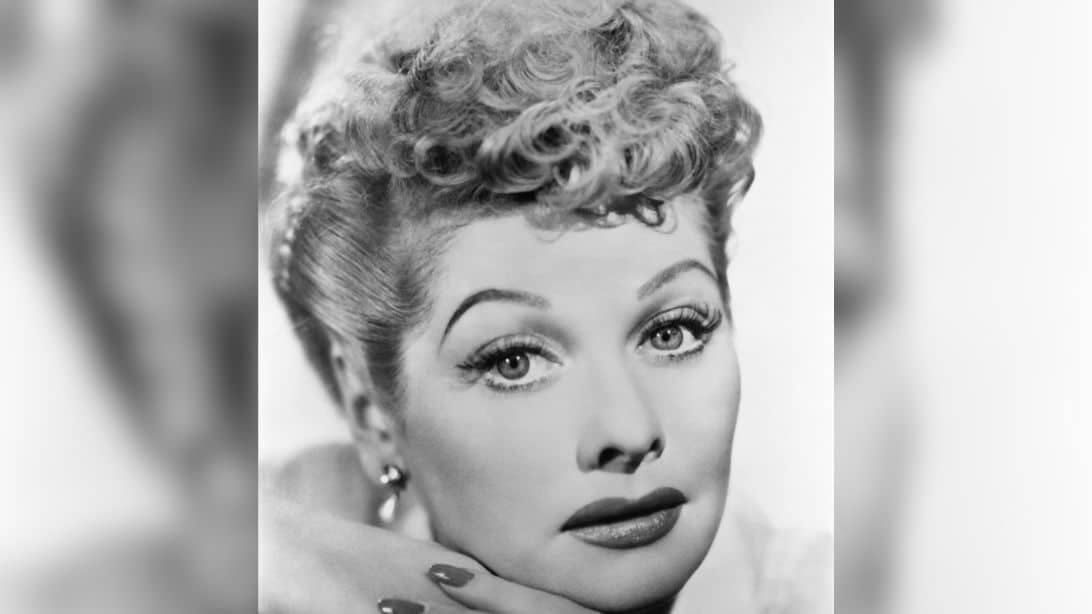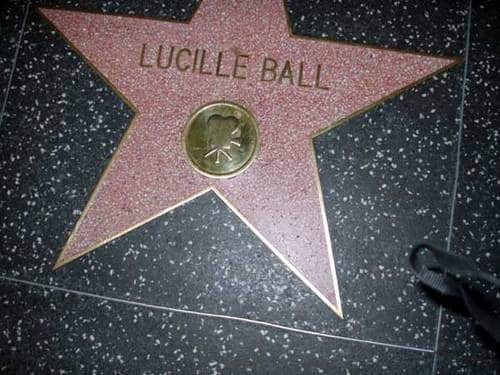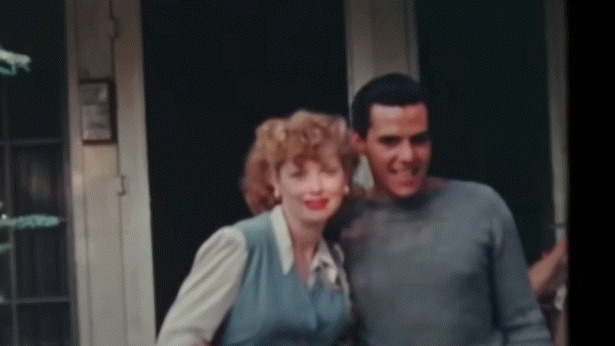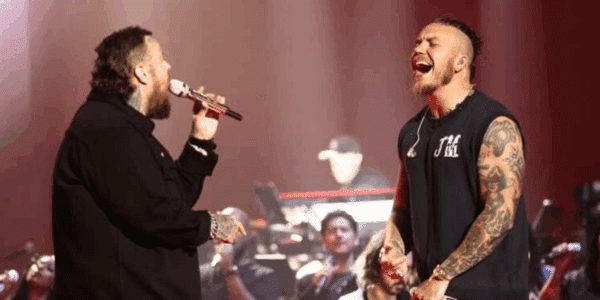The Life, Career And Legacy Of Lucille Ball
on Jul 26, 2023

Lucille Ball | Biography, TV Shows, Movies, & Facts
Early Life
Born Lucille Désirée Ball in Jamestown, New York, in 1911, Lucille Désirée Ball was no stranger to hardship. Her father’s untimely death when she was three years old profoundly impacted her life. Despite the hurdles, Ball’s vivacious spirit could not be dimmed, and a young Lucille would seek solace in the theater, watching performances that sparked a flame in her heart for the world of show business.
A natural redhead, she began her journey by enrolling in John Murray Anderson’s Dramatic School in New York City at age 15. Attending the school was her first formal training in acting. The school was run by John Murray Anderson, a well-known theater producer, and his team.
View this post on Instagram
Ball attended the school alongside other future stars like Bette Davis. But this could have been smoother sailing; Ball’s initial attempts were met with criticism. Some deemed her too shy, too reserved. She was the wallflower among sunflowers like Bette Davis, her contemporary at the time, and the star student at the school. But Lucille, with her inherent determination, would not let the initial setbacks thwart her dreams. “All I learned in drama school was how to be frightened,” recalled Ball.
However, her time at John Murray Anderson School could have been more successful. Ball often described herself as a “tongue-tied, awkward” student and didn’t stand out in the crowd of hopefuls. The school even wrote to her mother, stating, “Lucy’s wasting her time and ours. She’s too shy and reticent to put her best foot forward.”
While she didn’t find immediate success at the school, Ball persisted in the entertainment industry, eventually becoming one of television’s most influential comedic actresses. Though not fruitful at the outset, her time at John Murray Anderson’s school marked the beginning of her pursuit of an acting career.
Early Career
Leaving Broadway behind, Ball found her way to the golden state in the 1930s. She earned her stripes in Hollywood, initially working as a model before finally breaking into the acting scene. Lucille graced the silver screen in a string of modest roles that earned her the nickname “Queen of B Movies.”
Despite the steady work, stardom eluded Ball throughout the 1930s and 40s. But don’t be mistaken; this time wasn’t wasted. Lucille was honing her craft, learning the ropes, and perfecting her comedic timing. In these formative years, the makings of a future television queen were nurtured.
The radio was her next conquest, with her starring in the popular radio comedy show, “My Favorite Husband.” It was a stepping stone to the one role that would change her life and the landscape of American television forever: the lovable, uproarious Lucy Ricardo in “I Love Lucy.”
Lucille Ball’s journey was not an overnight success story. It was a tale of resilience, perseverance, and an unwavering belief in her talent. She faced life’s harsh spotlights and dimmed stage lights with equal grace and humor, attributes that would later shape her into America’s Sweetheart.
Career Timeline
Lucille Ball’s career spanned several decades and encompassed various roles in the entertainment industry.
Below is a timeline showcasing some of the pivotal moments in her career:
1920s
- Moved to New York to become a model, eventually enrolling in the John Murray Anderson School for the Dramatic Arts.
1930s
- Moved to Hollywood and started appearing in minor roles in films, earning her the nickname “Queen of the B’s” (B-movies).
1940
- Met Desi Arnaz while filming “Too Many Girls,” they married later the same year.
1948
- Played the lead role in the radio sitcom “My Favorite Husband,” which served as a prototype for “I Love Lucy.”
1951
- Co-created, produced and starred in “I Love Lucy” alongside husband Desi Arnaz. The sitcom was a phenomenal success and made her a household name.
- Lucie Désirée Arnaz was born.
1953
- Became the first woman to run a major television studio, Desilu Productions, which produced many popular television series, including “Star Trek” and “Mission: Impossible.”
- Desiderio Alberto Arnaz IV was born (also known as “Desi Arnaz Jr.” and “Little Ricky”)
1960
- After divorcing Arnaz, she continued to work in television, starring in “The Lucy Show” from 1962 to 1968.
1968
- Started another television series, “Here’s Lucy,” which ran until 1974.
1985
- Received the Lifetime Achievement Award from the Kennedy Center Honors.
1986
- Played a guest role in the sitcom “Life With Lucy,” which was her last attempt at a new television series.
1989
- Made her final television appearance at the Academy Awards before passing away later that year.
Throughout her career, Lucille Ball broke boundaries as a woman in the entertainment industry, becoming a successful actress, producer, and studio head. She is best remembered for her iconic role as Lucy Ricardo, a character that continues to be beloved by audiences worldwide.
Career Achievements
Lucille Ball had an impressive career in the entertainment industry that spanned over five decades. She broke barriers for women in comedy and business, and her work had a lasting impact on television. Here are some of her significant career achievements:
Acting Success and Impact:
- “I Love Lucy” (1951-1957): As the star of this iconic sitcom, Ball became a household name and was lauded for her comedic timing and physical comedy skills. The show, which starred her then-husband Desi Arnaz, was a massive hit and continues to be popular in reruns today.
- Hollywood Walk of Fame: In 1960, Ball received not one but two stars on the infamous walkway.

Industry Innovations and Contributions:
- Desilu Productions: Ball and Arnaz co-founded this production company, which produced many popular TV shows, including “Star Trek” and “Mission: Impossible.” Ball became the first woman to run a major television studio after buying out Arnaz’s share in 1962.
- The Lucille Ball Desi Arnaz Museum & Center for Comedy: located in Jamestown, New York, is dedicated to the legacy of the iconic comedic duo Lucille Ball and Desi Arnaz. It celebrates their contributions to comedy, television, and pop culture.
The museum features a wealth of memorabilia from their popular TV show, “I Love Lucy,” including original scripts, costumes, rare photographs, and other archival materials. Visitors can also explore reconstructed sets and have a chance to reenact some of the series’ most famous scenes.
The Center for Comedy, on the other hand, hosts comedy festivals and performances, helping nurture and promote new talents in the comedy genre. The overall goal of the museum and center is to preserve the legacy of Lucille Ball and Desi Arnaz while also serving as a platform for celebrating and cultivating the art of comedy.
Awards and Recognitions:
- Emmy Awards: Ball was nominated for 13 Primetime Emmy Awards throughout her career and won four times – two for “I Love Lucy,” one for “The Lucy Show,” and a lifetime achievement award in 1989.
- Induction into Television Hall of Fame: Ball was part of the inaugural group of inductees into the Television Academy’s Hall of Fame in 1984.
- Kennedy Center Honors: In 1986, Ball was recognized for her contributions to the performing arts with the prestigious Kennedy Center Honors.
- Cecil B. DeMille Award: The Hollywood Foreign Press Association awarded Ball the Cecil B. DeMille Award in 1979 for “outstanding contributions to the world of entertainment.”
- Posthumous Recognition: In 2001, Ball was recognized as the “Greatest TV Star of All Time” by TV Guide.
- International Radio and Television Society’s Gold Medal: In 1971, Ball became the first woman to receive the prestigious honor.
- Presidential Medal for Freedom: Ball was posthumously awarded the Presidential Medal of Freedom, the highest civilian award in the United States, by President George H.W. Bush in 1989. The award recognizes those who have made an “especially meritorious contribution to the security or national interests of the United States, world peace, cultural or other significant public or private endeavors.”
- Unfortunately, Ball passed away before she could receive the honor in person, but it served as a testament to her impactful career and significant contributions to the American entertainment industry. Lucille Ball’s legacy continues to inspire and influence comedians and entertainers, and her groundbreaking work in television paved the way for future generations of performers and producers.
- Women’s International Center’s ‘Living Legacy Award’: a prestigious accolade that honors and recognizes the achievements of extraordinary women who have made significant contributions to society.
- However, Ball’s career and life certainly align with the spirit of the award. She was a pioneering figure in the television industry, both in front of and behind the camera and her leadership at Desilu Productions broke significant barriers for women in the industry.
Ball’s legacy extends beyond her acting roles and industry leadership. She opened doors for women in the entertainment industry and set the stage for the future of comedic television. Her influence is still felt today, with many comedians citing her as an inspiration.
Did You Know? Backlash was harsh for Nicole Kidman being cast to play Lucy in Being The Ricardos.
Watch Nicole Kidman as Lucille Ball in the trailer for Being the Ricardos.
The Relationship, Courtship, and Marriage to Desi Arnaz
The relationship between Lucille Ball and Desi Arnaz is often described as one of Hollywood’s most passionate love stories, full of intense emotions and an undeniable connection.
Ball met Arnaz in 1940 on the set of the musical “Too Many Girls.” Arnaz, a charismatic Cuban-American musician, was six years younger than Ball, but their on-screen chemistry was immediate. Despite the film being a modest hit, the real-life romance between Ball and Arnaz stole the show.
Their courtship was as fiery as it was fast. Arnaz was known for his charm and was quite the ladies’ man, which caused Ball to wrestle with jealousy throughout their relationship. Still, their bond was undeniable, and after a whirlwind six-month romance, the two eloped and were married in Greenwich, Connecticut, in November 1940. Ball wore a simple black dress – a far cry from traditional Hollywood glamor – and Arnaz wore a 40-dollar ring from Woolworth’s. It was an unconventional start to a marriage that would become one of Hollywood’s most iconic.
Did You Know? Wedding Day Lucille Ball: Why wear a black dress?!?!
However, their relationship was challenging. Their early married years were marked by periods of separation due to their demanding work schedules, Arnaz’s touring with his band, and Ball’s burgeoning movie career. To bridge the physical distance and steady their rocky relationship, Ball suggested they work together.
Ball’s idea of working together led to their collaborative venture in television, culminating in creating “I Love Lucy” in 1951. The show was a tremendous success, reflecting Ball and Arnaz’s undeniable chemistry and comedic timing. They also made the strategic move of insisting the show be filmed, which allowed for syndication and reruns, contributing significantly to their financial success and longevity in the public eye.
Unfortunately, the pressures of fame, Arnaz’s alcoholism, and alleged infidelity strained their marriage, leading to their divorce in 1960. Despite their issues, Arnaz and Ball remained professional partners and friends until Arnaz died in 1986.
Their relationship, as tumultuous as it was, remains one of Hollywood’s most legendary love stories, transcending their challenges to create a television legacy that continues to bring laughter to audiences worldwide.
‘I Love Lucy’
“I Love Lucy,” created by Lucille Ball and Desi Arnaz, premiered on October 15, 1951, and became one of the most beloved and influential sitcoms in television history. The series was a breakthrough in many ways, from its innovative production methods to its influence on the depiction of marriage and family life on television.
Production and Creation Details
The show was the first to be filmed in front of a live studio audience on 35mm film. This innovation allowed for high-quality kinescopes (recordings of the monitor feed) to be distributed to stations across the country. Additionally, this process gave us the reruns we’re familiar with today.
Another innovation was the use of a multi-camera setup. Three cameras would film simultaneously, allowing editors to cut to the best angle or reaction shot.
“I Love Lucy” was a pioneering sitcom produced by Desilu Productions, founded by Ball and Arnaz. In a groundbreaking move, Ball was the first woman to run a major television studio.
Behind-the-Scenes Drama
Despite the show’s comedic premise, behind the scenes, Ball and Arnaz had a volatile relationship marked by love, respect, and tumultuous periods, including rumored infidelity on Arnaz’s part.
The long hours and pressures of running a production company began to take a toll on Arnaz, and he began drinking heavily, which added further strain to their marriage.
Popularity and Demise
The series was hugely popular because it combined a traditional family sitcom setup with physical comedy, often centered on Lucy’s humorous antics and schemes.
Lucille Ball’s comedic timing, combined with Arnaz’s charm and the chemistry between the cast, contributed to the show’s massive appeal. Ball’s portrayal of Lucy as a relatable, humorous, and flawed housewife was a departure from the idealized portrayals of women often seen on TV at the time, which also endeared the show to audiences.
“I Love Lucy” ended its original run in May 1957, after which it continued for three more seasons with 13 one-hour specials, known as “The Lucy-Desi Comedy Hour.” The show’s demise was primarily due to Ball and Arnaz’s issues. Their marriage had been strained for years, and they divorced in 1960, marking the end of their professional collaboration.
Despite its end, “I Love Lucy” left a lasting impact on television comedy and is still beloved by audiences today. Its innovative production techniques set the standard for many sitcoms that followed. Lucille Ball’s influence as a woman in a leading role and running a production company broke barriers in the television industry.
The Lucy Award and Past Honorees
The Lucy Award, named in honor of Lucille Ball, is an accolade presented by the Women in Film organization as part of their annual Crystal + Lucy Awards. The Lucy Award recognizes innovation in television and was first presented in 1994. The award honors those who contribute to the visibility of women through their work in television.
As for the recipients of the Lucy Award, it has been given to a variety of actresses, directors, and even television series that have significantly impacted how women are perceived in television. Some notable recipients include:
- Shonda Rhimes (2007): Creator and showrunner of TV series like “Grey’s Anatomy” and “Scandal,” Rhimes has been recognized for her ground-breaking storytelling and creation of complex female characters.
- The Women of “Mad Men” (2010): The actresses from this critically acclaimed television series were recognized for their powerful and nuanced performances.
- Lena Dunham (2012): Creator and star of the HBO series “Girls,” Dunham has been lauded for her realistic portrayal of young women.
- The women of “Scandal” (2015): For their diverse representation and portrayal of strong female characters.
- Other notables include Carol Burnette, Barbara Walters, Garry Marshall, Marlo Thomas, Roseann, Phyllis Diller, Cher, Lily Tomlin, Gena Davis, Salma Hayek, Holly Hunter, and Courteney Cox.
FREQUENTLY ASKED QUESTIONS
How old was Lucille Ball when she met Desi Arnaz?
Lucille Ball met Desi Arnaz in 1940 while filming the movie “Too Many Girls,” which means she would have been 28 or 29 years old, depending on the exact time of year they met. Arnaz was six years younger than Ball. Despite their cultural differences and somewhat tumultuous relationship, they fell in love and were married later that same year. This iconic duo went on to create the much-loved sitcom “I Love Lucy” in 1951.
When Was Desi Arnaz Jr. Born, and Was He Famous?
Desi Arnaz Jr. is an American actor and musician, best known as the son of entertainers Lucille Ball and Desi Arnaz Sr. Born on January 19, 1953, his birth was one of the most publicized in television history as it coincided with his parents’ fictional counterparts’ baby arrival in the popular sitcom “I Love Lucy.”
Arnaz Jr. made numerous appearances on “The Lucy Show,” his mother’s follow-up to “I Love Lucy.” He also starred in the series “Here’s Lucy,” where he showed off his musical talents. As a musician, Arnaz Jr. was a member of the pop group Dino, Desi & Billy, with Dean Martin’s son Dean Paul Martin and their friend Billy Hinsche.
Despite his early fame, Arnaz Jr.’s acting career waned as he grew older, but he still occasionally appears in films and television shows. He’s dedicated much of his life to music as a performer and teacher and is heavily involved in the Boulder City, Nevada, arts scene where he resides.
Did You Know? What are Desi Arnaz Jr. and Lucie Arnaz doing now?
Who did Lucy marry after she and Desi divorced?
After her divorce from Desi Arnaz in 1960, Lucille Ball married comedian Gary Morton in 1961. Morton, who was 13 years her junior, became a supportive partner both personally and professionally. He often worked behind the scenes on Ball’s subsequent projects, such as “The Lucy Show” and “Here’s Lucy,” helping to run her production company, Desilu Productions. Their marriage lasted until Ball died in 1989, marking a 28-year union. Gary Morton remained dedicated to her throughout their life together, providing Ball with a stable and loving relationship.
Did Lucy Use a Stage Name?
Before she gained fame as Lucille Ball, the actress did use the stage name Diane Belmont. She used this name early in her career as a model and an aspiring actress. The name is said to have been inspired by the Belmont Stakes, a horse racing event in New York. This stage name was part of Ball’s initial endeavors to establish herself in the entertainment industry. However, she eventually started using her real name and achieved legendary status as Lucille Ball.
What Was Lucille Ball’s Film Debut?
Lucille Ball’s debut was in 1933’s “Roman Scandals,” an American pre-Code musical film directed by Frank Tuttle. In this film, she was cast as a Goldwyn Girl, a group of showgirls appearing in productions by Samuel Goldwyn. However, it’s important to note that this was an uncredited role.
Ball’s first significant film role came a few years later, in 1937, when she appeared in “Stage Door” alongside Katharine Hepburn and Ginger Rogers. This film marked a turning point in Ball’s career, leading to a series of roles that would gradually build her reputation in the industry before she ultimately became a television icon with “I Love Lucy.”
Besides Her Husband Desi, What Actor Was Lucy Closest To?
Vivian Vance was a celebrated actress best known for her role as Ethel Mertz in the groundbreaking 1950s sitcom, “I Love Lucy,” starring alongside Lucille Ball. Vance’s portrayal of Ethel, the landlady and best friend to Ball’s character, Lucy Ricardo, is one of television’s most iconic roles.
Ball and Vance’s on-screen chemistry was a major part of the show’s success. Off-screen, their relationship was a little more complex. Initially, Ball was somewhat hesitant about Vance being cast as Ethel due to their age difference and differing physical appearances. However, they grew to become close friends over the years, developing a bond that lasted long after “I Love Lucy” ended.
After “I Love Lucy,” Vance continued to work with Ball on “The Lucy Show,” where she played Vivian Bagley. Vance’s work with Ball made her a pioneering figure in television. In 1954, Vance became the first actress to win an Emmy Award for Outstanding Supporting Actress for her role in “I Love Lucy.”
In summary, Vivian Vance played a significant role in Lucille Ball’s career, and their comedic partnership remains one of television’s most celebrated.
Did Dick Van Dyke and Lucy Work Together?
Lucille Ball and Dick Van Dyke, two legendary figures in television history, did indeed have an opportunity to work together. This collaboration occurred in 1974 on a special television program titled “Lucy and Dick in ‘Lucy Gets Lucky’ and ‘Dick Van Dyke and the Other Woman.'” In this CBS special, both comedy giants starred together in “Lucy Gets Lucky,” a TV movie about a woman (played by Ball) who travels to Las Vegas to see her favorite entertainer, played by Van Dyke.
It’s worth noting that this collaboration came after both stars had made significant marks on television. Ball was well known for her iconic role in “I Love Lucy,” while Van Dyke achieved fame with “The Dick Van Dyke Show.” Although the two did not collaborate frequently, their shared appearance in the 1974 special remains a notable intersection of their careers.
Did You Know? John Wayne and Lucille Ball had an unexpected friendship not many knew about.
When was Lucille Ball’s last television appearance?
Lucille Ball’s last television appearance was on the Academy Awards telecast on March 29, 1989. She and fellow comedian Bob Hope presented the award for Best Picture. This appearance came less than a month before her death on April 26, 1989. During the telecast, Ball received a standing ovation, a testament to her enduring popularity and status as a beloved figure in television comedy.
What did Lucy say when she heard her beloved Desi had died?
Desi Arnaz passed away on December 2, 1986, after a long battle with lung cancer. When Lucille Ball learned of her former husband and longtime collaborator’s death, she reportedly said, “I loved him very much, and I miss him. We had 20 wonderful years together.”
Despite their tumultuous relationship and ultimate divorce, Ball and Arnaz remained friends and continued to speak highly of each other. They shared two children and remained a significant part of each other’s lives until Arnaz’s death. Their mutual respect and love endured even after their professional and personal relationship ended.
Did You Know? Desi Arnaz Death: Find out what Lucille Ball told Desi goodbye just prior to his death.
What was the cause of the death of Lucille Ball?
Lucille Ball, the beloved American actress and comedian, passed away on April 26, 1989. The cause of her death was an aortic dissection, a severe condition involving a tear in the inner layer of the aorta, the large blood vessel branching off the heart. This condition followed open-heart surgery at the Cedars-Sinai Medical Center in Los Angeles, which she underwent a week before treating a different cardiac issue. Ball was 77 years old at the time of her death. Her comedic legacy, primarily through her iconic role in “I Love Lucy,” continues to resonate with audiences worldwide.
View this post on Instagram
References
- https://en.wikipedia.org/wiki/Lucille_Ball
- https://www.biography.com/actors/lucille-ball
- https://www.britannica.com/biography/Lucille-Ball
- https://www.thefamouspeople.com/profiles/lucille-dsire-ball-2192.php
- https://nationaltoday.com/birthday/lucille-ball/
- www.womenshistory.org/education-resources/biographies/lucille-ball













